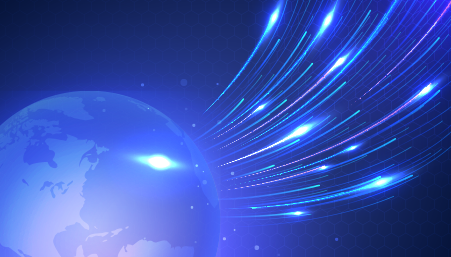How Dark Fibre is fueling the future of Broadband Connection.

Today, we need the internet to communicate with our loved ones, for information and research, education, work, business, the list is endless. This requires a fast and reliable broadband connection which will help businesses and consumers get their job done efficiently. One of the most popular types of internet connections is a broadband connection used in households and offices throughout the country.
A Fiber internet connection is a high-speed internet connection that provides faster data transmission, enabling us to perform all these tasks on the internet. Fibre optic broadband, also called fibre internet, is one of the best broadband to use. This cutting-edge technology uses thin strands of glass or plastic, known as optical fibres, to transmit data at high speeds in the form of light pulses. On the other side of fibre optic networks is dark fibre.
In this article, we will discuss in-depth about dark fibre, how it works, and its advantages in broadband connection.
Dark Fibre Explained
What is dark fibre?
As mentioned above, fibre optic broadband connection uses optical fibre cables to transmit data. It is important to know that not all the fibre cables laid underground are being utilized. This means that these unused cables don't have any electronic devices attached to them on either ends, and this is what is referred to as dark fibre, hence the term 'dark' because they are not actively transmitting data.
Unlike ‘lit’ fibre, dark fibre remains inactive as it doesn’t have the necessary equipment to generate or detect light signals.
(Lit fibre transmits data actively using optical transmitters and receivers)
However, the potential of dark fibre lies in its ability to be activated when needed. Organisations or dark fibre providers can choose to 'light up' specific fibres within the dark fibre network by adding the necessary optical transmitters and receivers at each end of the link.
Advantages of Dark Fibre in Broadband Connectivity
Dark fibre internet connection offers several advantages, making it an attractive option.
Scalability
Dark fibres provides a highly scalable solution for broadband connection. As data demands increase, organisations can easily scale up their network capacity by 'lighting up' additional fibres.
Customisation and Control
One of the primary advantages of dark fibres is the level of customisation and the control it provides the user. Organisations have the flexibility to choose their own networking equipment, protocols, and technologies. This level of control is particularly beneficial for tailoring the network to specific requirements and optimising performance.
High Bandwidth Capacity
Dark fibre supports extremely high bandwidth capacities with high internet speed. This is crucial for meeting the demands of data-intensive applications, high-definition video streaming, cloud services, and emerging technologies like virtual-reality and augmented-reality.
Low Latency
Dark fibre networks typically exhibit low latency. It makes them suitable for applications that require real-time communication, such as video conferencing, online gaming, and financial transactions.
Support for Advanced Technologies
Dark fibre provides the proper infrastructure to support advanced and emerging technologies, including 5G integration, Internet of Things (IoT) connectivity, and edge computing. Its high capacity and low latency features are key enablers for these technologies.
Key Takeaways
Dark Fiber has brought a new age of broadband connections. It offers incredible options for networks that can grow and change as needed, giving a strong base for ensuring broadband services can keep up with the increasing needs of our digital world.
Dark Fiber paves the path for a bright future in high-speed internet connectivity, empowering businesses, supporting residential connections. It is slowly and steadily laying the groundwork for advanced technologies.
Frequently Asked Questions (FAQs)
What is Dark Fibre? How does it differ from traditional Fibre Optics?
Dark Fibre refers to unused optical fibre cables that are not actively transmitting data. Unlike traditional fibre optics, which are 'lit' and actively used for data transmission, dark fibre remains dormant until activated.
How Does Dark Fibre Contribute to the Expansion of Broadband Connections?
Dark Fibre contributes to the expansion of broadband connection by providing a scalable and customisable infrastructure. Organisations such as internet service providers and telecommunication companies can lease or own dark fibre to meet the growing bandwidth demands, allowing for future-proofing and efficient network expansion.
What are the benefits of using Dark Fibre for broadband networks?
Some of the benefits of dark fibre for broadband connection include high scalability, customisation, low latency, high bandwidth capacity, and more.
In what ways does Dark Fibre support high-speed internet services?
Dark Fibre supports high-speed internet services by offering high bandwidth capacities, low latency, and the ability to scale up network capacity as needed. Its customisable nature allows for the optimisation of network configurations to deliver high internet speed and fast and reliable internet services.
Can Dark Fibre be used for both residential and business broadband connections?
Yes, Dark Fibre can be used for both residential and business broadband connections. Its flexibility allows for the creation of private networks, making it suitable for a wide range of applications, including high internet speed services for households and businesses.
